Tokyo - It is also possible to connect Hawaii in 30 minutes Space X's new huge rocket "BFR" What?

Mr. Eulon Mask who took part in a space conference held in Australia from 27th to 29th September, 2017, is a massive rocket planned to be used for the Mars migration program SpaceX (space X) is developing, We announced the code name "BFR". A huge rocket of 106 meters in length, comparable to NASA's Saturn V rocket, can refuel in space and head towards Mars. In addition to using it on the planet like a passenger aircraft, anywhere in the world It has the potential to become a ride that can be reached within one hour.
Making Life Multiplanetary - YouTube
BFR is a two-stage rocket consisting of a booster used at launch and an upper stage rocket carrying occupants and cargo. Space X is equipped with 31 next-generation rocket engines "Raptor", which is under development and is a super huge rocket with the ability to launch a mass of 4,400 tons including aircraft, fuel and cargo.
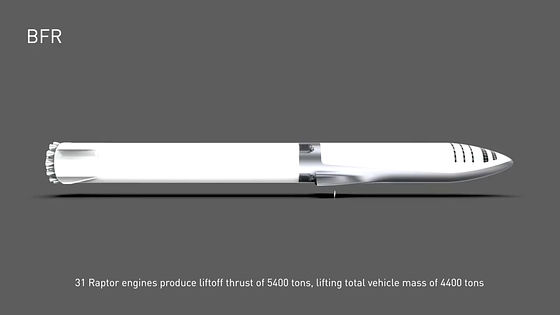
The total length of BFR is 106 meters, and it has become a fleet of size far larger than Falcon 9 and Falcon Heavy so far. A thick body with a diameter of 9 meters is also a noteworthy point, while checking the total height.
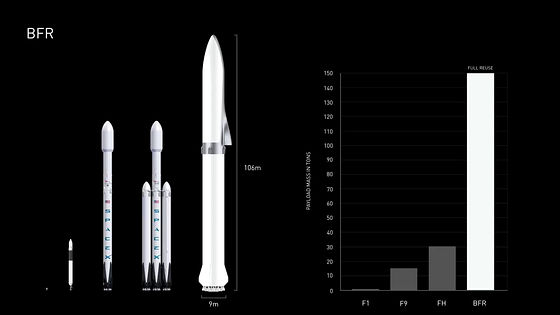
Even just the upper section where cargo and passengers ride actually has a length of 48 meters, which is longer than the former space shuttle. The diameter is 9 meters, the dry weight is 85 tons, the maximum launchable loading capacity is 150 tons. In addition, this aircraft can return to the ground after landing like the company's "Falcon 9" rocket and land, and the cargo volume that can be brought back at that time is 50 tons. The size of a person is shown on the side of the aircraft drawn in the image below and you can see how big aircraft are.
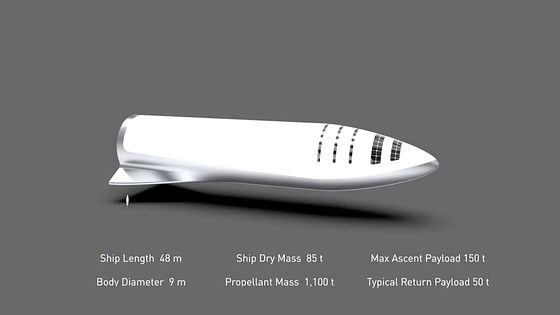
A total of six rocket engines are mounted on the bottom of the aircraft. In the center part has a tank that contains methane and liquid oxygen to become fuel and a cargo room / living space "payload section" is installed at the tip part with occupant and cargo.
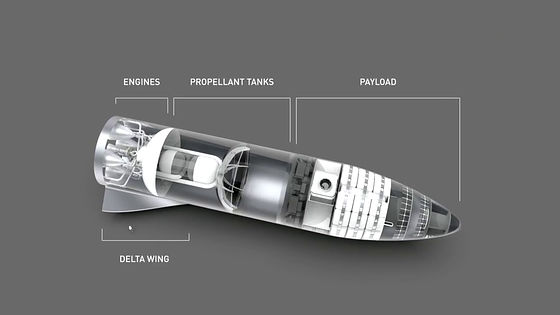
Since the payload section is filled with air and pressurized to the same atmospheric pressure as on the earth, the crew can work without space suit. The volume of the pressurized section is larger than the pressure section of the super huge jumbo machine "A380". In addition, this compartment has 40 loading rooms and wide common areas, and it seems that a central depot, a galley, and a shelter to protect themselves from the solar wind are prepared.
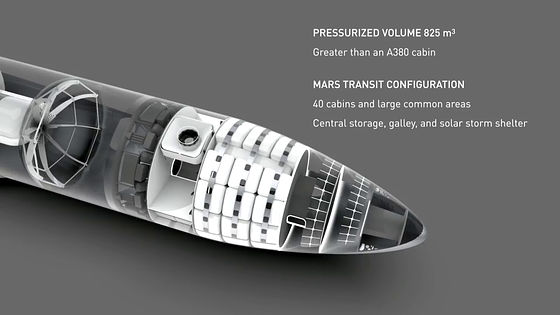
The tank section is divided into two large sections, 240 tons of methane to be fuel and 860 tons of liquid oxygen can be installed. In addition, a subtank (header tank) for keeping fuel for use at landing is prepared separately.
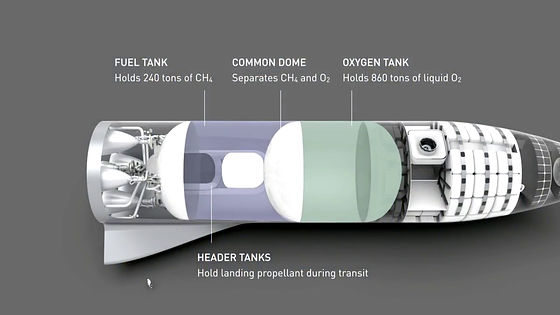
On the bottom is equipped with 4 raptor engines and 2 ground rocket engines. Raptor engine is an engine used in outer space, it is possible to adjust the thrust between 20% and 100%. Represent the ability of the rocketSpecific thrustIt is 375 seconds and boasts a thrust of 1,900 kilo-Newton for four as well. In addition, the ground rocket engine is an engine used when returning to the ground and landing, and it is said that it has redundancy that can be used for troubles by installing two units. Both engines are mounted on the rocket via "gimbals" which can change the direction of the nozzle, so it is possible to adjust the direction (vector) the rocket travels.

In addition, this rocket has the feature that it can replenish fuel in outer space. At the time of refueling, the two BFRs are docked so that the buttocks match each other, and the fuel is sent from the "tanker" that has loaded the fuel.
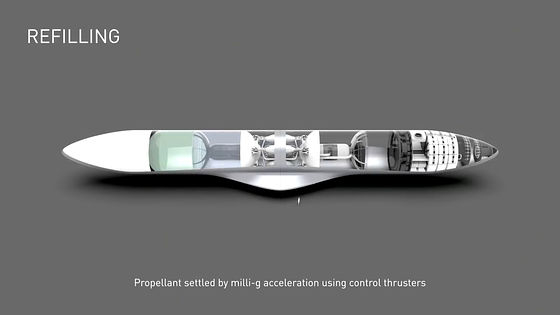
When comparing the performance with the main rocket in the world it is like this. In the rightmost BFR, the mass capable of being launched to a low orbit that orbit the earth is 150 tons, which is a performance that exceeds 135 tons of the largest rocket ever "Saturn V rocket" ever. Japan's H-IIB rocket is 19 tons, and the Falcon 9 rocket is 22.8 tons, etc. It shows how BFR can launch many payloads.
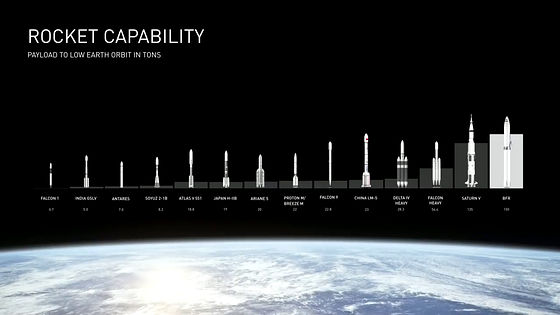
On the other hand, it is like this when arranging in order of expenses required for launch. BFR is moving to the leftmost, which means that the cost of one launch is the lowest. Rather, it is also interesting that it is occupied by the space X rocket everything from the left to the fourth from the left.

Mr. Mask says that BFR with such performance can be used for missions such as satellite launch, supply to the International Space Station (ISS), arrival at the moon, and exploration of Mars. By the way, "BFR" is a codename and not an official name, but Mr. Mask told BFR what it means "Big Fucking Rocket" and the surprising contents.
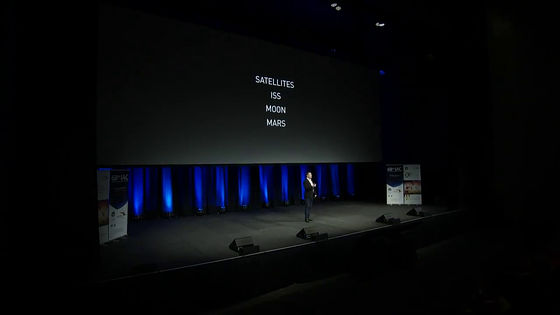
When launching an artificial satellite, it is possible to launch a heavyweight artificial satellite using the high payload capability, and also to launch a large artificial satellite with a size of 9 meters in diameter. This makes it possible to deliver a huge mirror required for an artificial satellite such as the Hubble Space Telescope to the universe as it is as a finished product without splitting it as it was before.
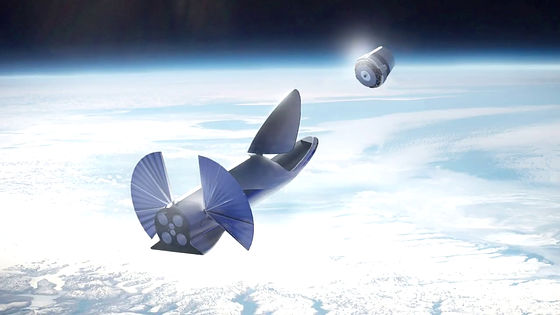
It is like this when docking to ISS. Very huge BFR compared to ISS gets a lot of eyebrows, so even if you carry lots of luggage at once, the ISS side may be unable to handle it.
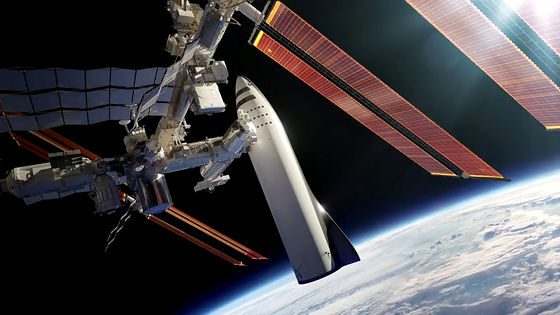
BFR can also be used for missions to send humans again in the month. In particular, it has the feature of preparing a refueling ship on an elliptical orbit orbiting the earth, filling up the tank of the lunar landing ship that was launched later, and allowing it to go to the moon. And after the completion of the mission in the month, it is possible to take off again as it is, return to the earth, re-land and complete the mission.
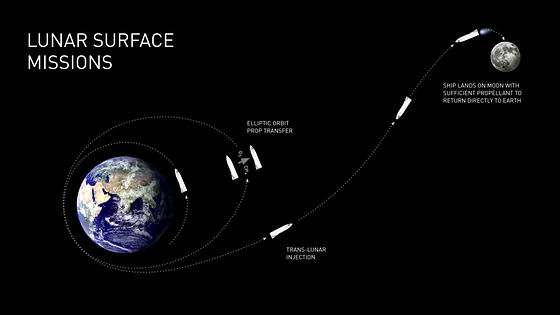
You may be able to build a space station on the moon by using large payloads and sending lots of goods. If you build a base on the moon with weaker attraction than the Earth, you will be able to expect the merit of making space exploration ahead from there.

Even when aiming at Mars, performance that can refuel is demonstrated. We will launch a tanker loaded with fuel in advance and launch an exploration ship loaded with passengers and cargo later. Then refuel in space and head to Mars as it is.
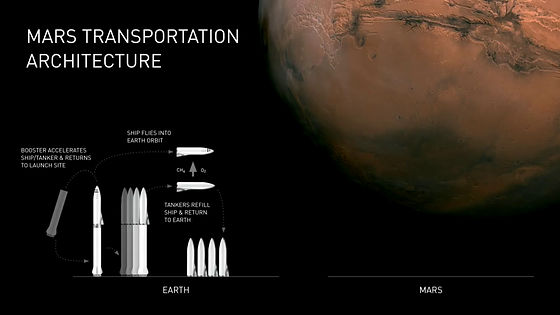
While writing such a thing, in fact, the idea that "refueling is not necessary immediately after launch?" Came across my mind. If fuel is replenished to a certain extent when it flew to Mars, you can also understand its necessity, but if it is just after starting from the Earth, the fuel should not be reduced so much.
As a result of thinking about this mechanism along with such a question, as a result of arriving at the answer, the arriving answer "loading necessary supplies in the way to Mars as much as zero or very little fuel at the time of launch as far as possible to reach the universe When refueling, by refueling from tankers, we will leave towards Mars in a condition ready to load cargo and fuel ". In other words, it may be aimed at allowing loading amounts beyond the limits of launching from the earth by separating goods and fuel separately and combining them in outer space.
A quiet talk book. BFR on the route to Mars spreads solar panels like flying fish and creates the energy necessary for inboard activity. And after a long flight, which is also said to be four months, the BFR finally reached Mars, it decelerated by using the atmosphere of Mars, which is said to be dilute, eventually using two landing rocket engines to make soft landing I will fulfill. And while doing activities on Mars, BFR uses hydrogen, carbon dioxide, and local resources to generate fuel, methane and oxygen for use on the way back, using a technology called "local resource use" (ISRU) I will. At that time, methane and water are produced from hydrogen and carbon dioxide using metal nickel as a catalystSabatier reactionIt is said to use the mechanism of.

The BFR refueling in that way carries out takeoff from Mars, re-enters the atmosphere in the returning route to Earth, and is supposed to make a soft landing from the reverse injection and return.
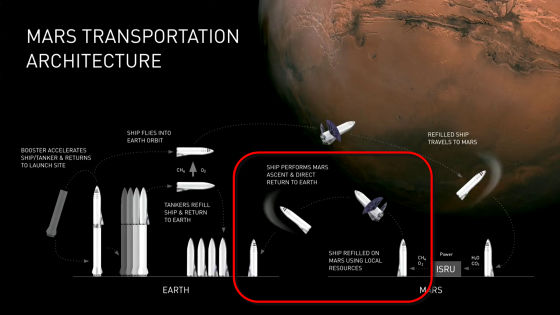
About this concept Mr. Mask plans to send at least two cargo-type BFRs to Mars by 2022 and plan to check water resources, investigate risk factors, and then build the basis necessary for lunar surface exploration . Later, in 2024, we plan to launch two cargo ships and two BFRs with passengers on board, and to fulfill the first humanoid Mars landing.

At the initial stage, the rocket launch facility and the simple living space and incidental facilities were constructed ......

After that, a plurality of launch facilities and a medium-sized living space etc. are constructed.
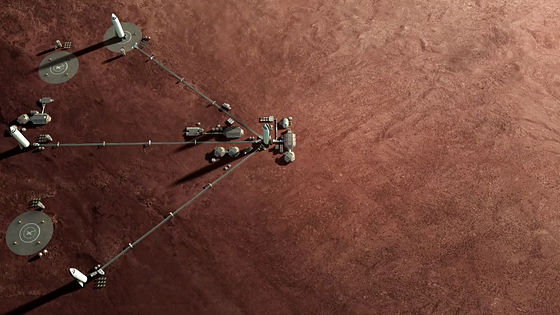
"City" is expanded by sending more supplies ... ...

We will gradually expand the scale. At this stage, it seems that solar panels and food production facilities are also being made.
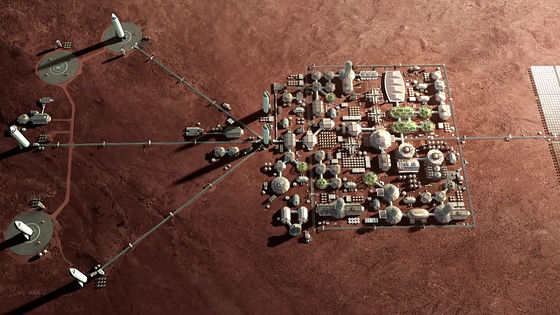
As if the game "Sim City", artificial equipment seems to be made one by one, the dream will swell.
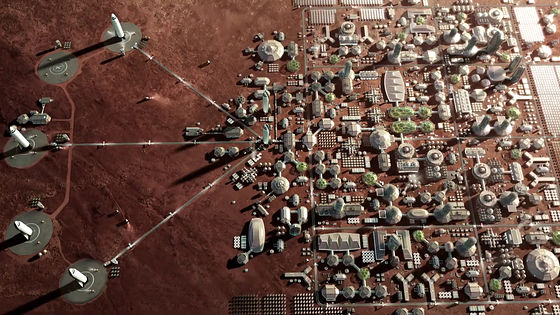
In the near future, such a "city" may appear on Mars as well.
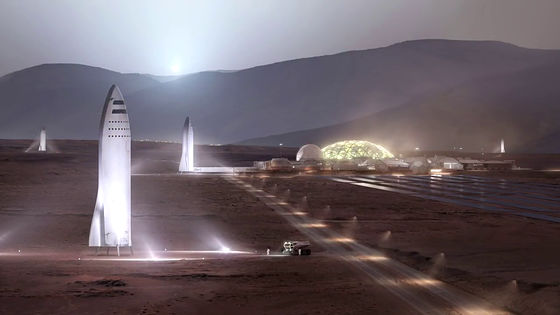
When city expansion is animated it is like this.
And at the end of the presentation, Mr. Mask revealed the idea of a surprising rocket transportation network by saying, "If you make a rocket that can go to Mars, you can apply it also to the Earth".
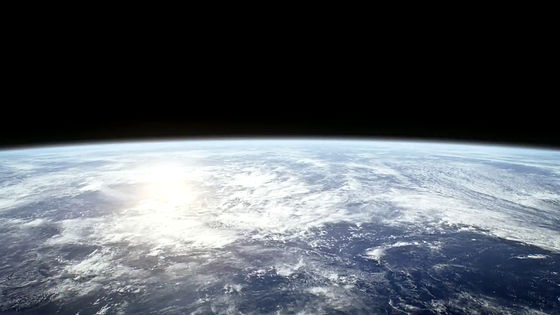
In the following movie entitled "Earth to Earth" (From Earth to Earth), you can see the content of the idea.
BFR | Earth to Earth - YouTube
New York at 6:30 in the morning. When the morning sun is about to rise ...
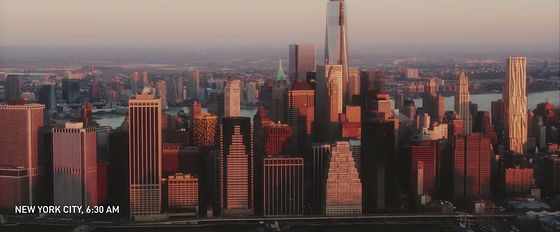
Several people cross the barge of the sea and get on board the ship.

The sign of "boarding" is on the barge. The destination is in Shanghai, scheduled to leave at 7 o'clock.

The distance traveled is 11,897 km. However, the time required is "39 minutes", which is indisplayable at a fairly disappointing content.

In front of a ship carrying a passenger ......
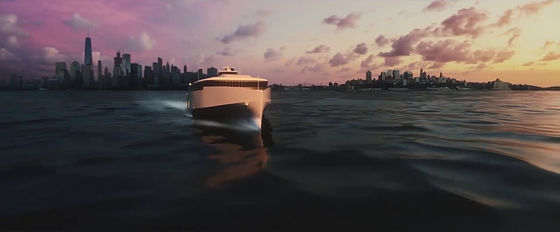
A huge "barge barge" and BFR to stand on it.

Passengers are sucked into the BFR from the boarding bridge.
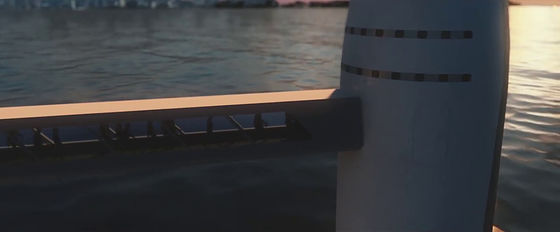
BFR carrying passengers took off. The state of being launched vertically without using a runway like an airplane is completely "rocket" itself.
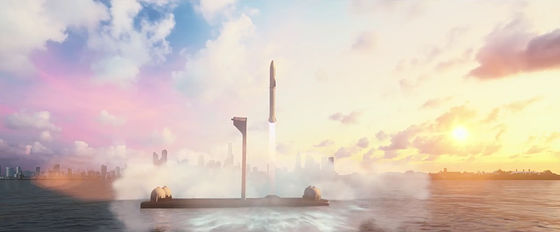
BFR that accelerates tremendously and accelerates still beyond the speed of sound. Ultimately, it is a concept to accelerate to 27,000 km / h. BFR which reached space completely completely cut off the first stage booster used for launch. After that, the booster will return to the original launch place on its own, reverse jetting and landing to prepare for the next launch.
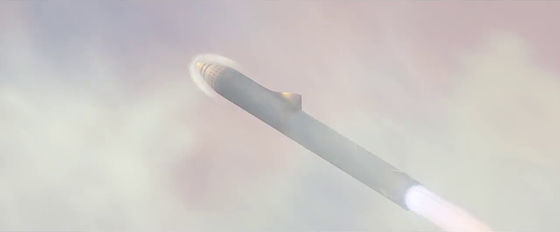
BFR sailing at the same speed as the International Space Station, which is 27,000 km / h, crosses the Pacific in an instant ... ...
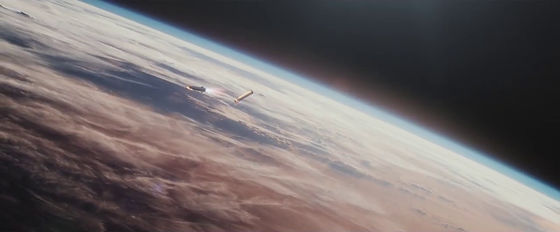
Landing on the "barge ship" floating on the sea of Shanghai. The journey time is 39 minutes, the time of Shanghai is 7:39 of the night. My head is confused as to the concept that I have never experienced, how to calculate the time difference any longer.
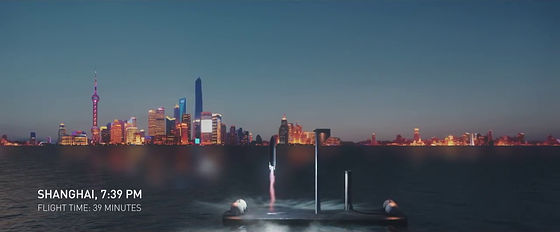
In this way BFR, for example in Hong Kong and Singapore in 22 minutes ... ...
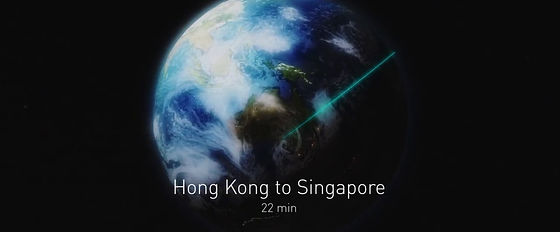
24 minutes for Los Angeles and Toronto.
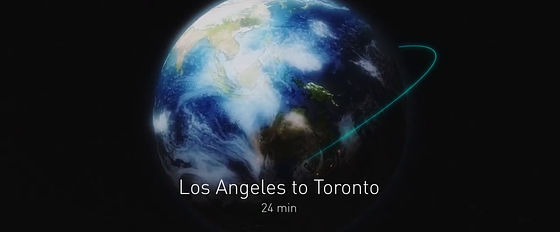
It's 30 minutes from Honolulu from Tokyo. It is a terrible idea that Hawaii trip will be possible with the feeling "About a little going to the next town".
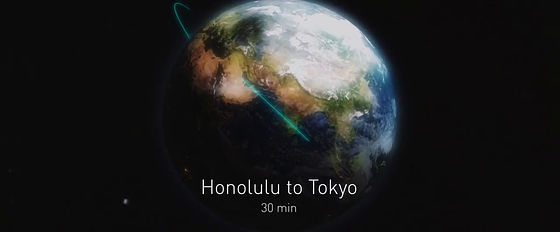
Apparently, the transportation network by BFR tends to shorten the time as the distance increases. Almost keep long distance travel within 30 minutes ...
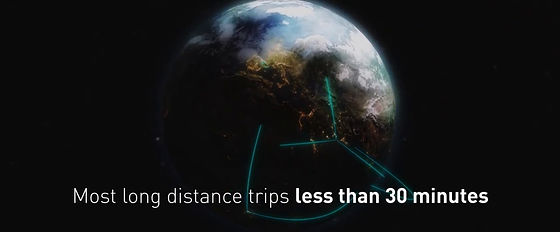
It has a dream that makes it possible to move to any place on the earth within an hour.
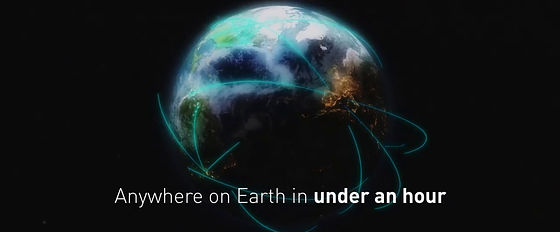
Although only the contents that "Hawaii from Tokyo by 30 minutes" are reported in various reports, the main purpose of the concept revealed this time is the content of BFR used for the new Martian exploration plan to the last, to move the earth It was the impression after seeing the presentation in real time that the role of transportation was to be a sub-treatment to the last.
In fact, in order to realize such "riding thing" it is thought that it is necessary to clear various subjects. For example, even if it says "Accelerate to 27,000 km / h" as a matter of time, it is expected that the power to passengers at that time will be considerable. For example, if you accelerate from zero initial speed to 27,000 km / h in 10 minutes, passengers will be accelerated by approximately 1.3 G over the last 10 minutes. It is said that acceleration G of a general passenger aircraft is around 1 G, but if that force lasts for 10 minutes, some people will feel mood and physical condition worse. Of course, it goes without saying that safety must be secured at the time of takeoff and landing and when reaching outer space.
Nonetheless, it is also thought that such challenges are to be cleared up, and it is trying to realize "dream riding" such as Space X, which has realized various strange out of date plans, and hyper loop On the other hand it is a fact that I do not expect unfounded that Mr. Mask would truly shape it. Mr. Mask told the fare of the ground version BFR "Keep it down to the economy class of a passenger aircraft", and it may eventually bring about a revolution in the empty traffic.
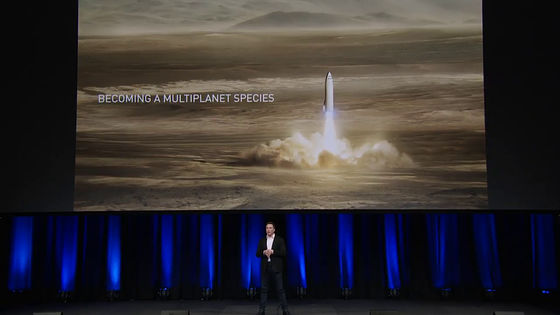
Related Posts:







